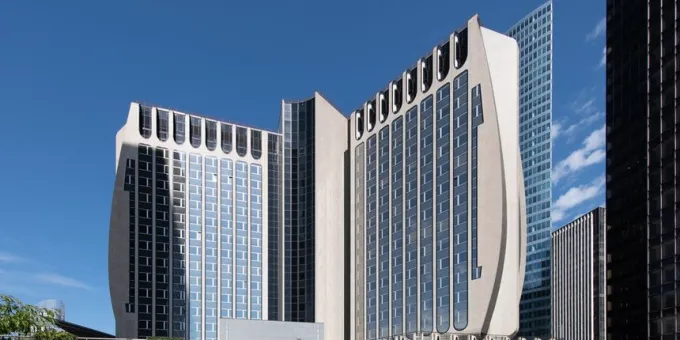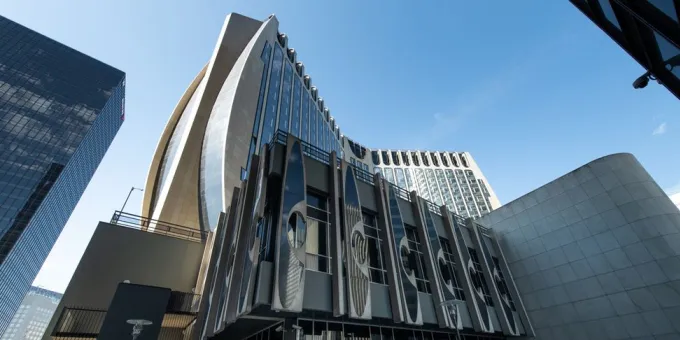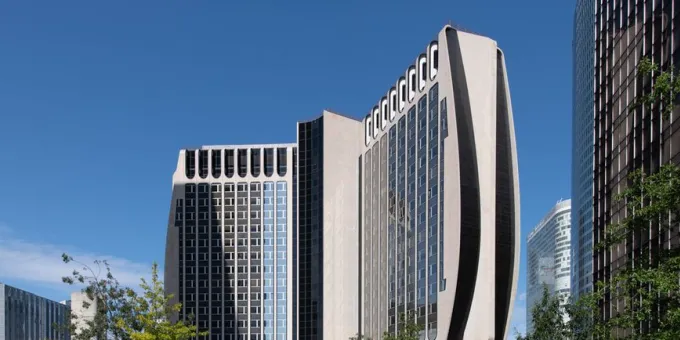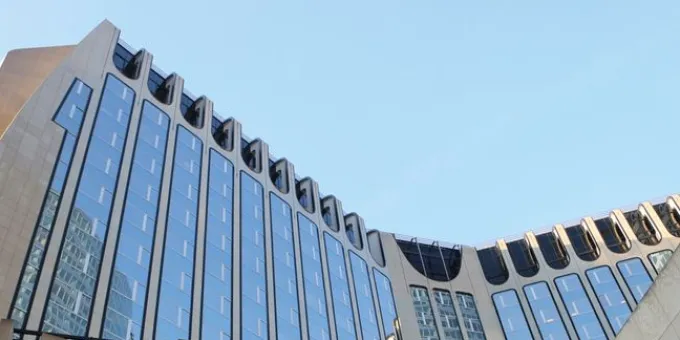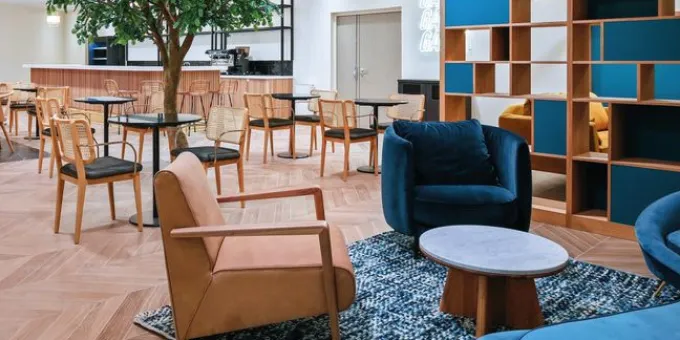Hyfive
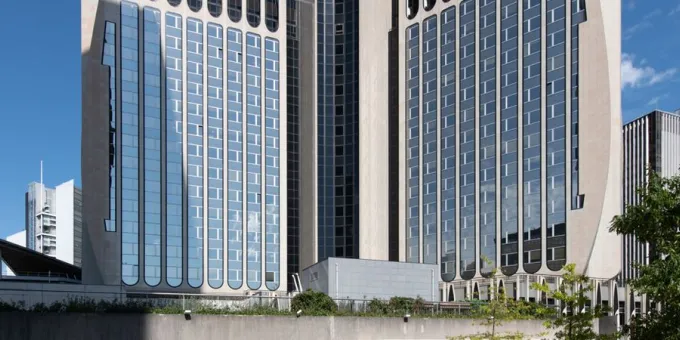
Hyfive
Year of construction: 1983
Year of renovation: 2014, 2023
Architect: Jean Balladur
Surface area: 28,000 m²
Height: 54 m, 15 floors
Former name: PB5, SCOR
Address: 14 passage Boieldieu - 92800 Puteaux
Nearest parking: Boieldieu
Nearest transport: La Défense (Grande Arche)
The real estate company Icade, owner of the tower, decided to renovate the former SCOR tower, which was renamed Hyfive for the occasion.
The renovation involved redesigning the common areas and services to meet the needs of employees: a concierge service, restaurants, a co-working space, bicycle parking, and more. The tower also offers breathtaking views of Paris, the Eiffel Tower, and the Bois de Boulogne. Hyfive is a high-performance tower, certified WiredScore Gold and actively committed to energy transition.
A look back at its history. One of the most original buildings in the business district, Hyfive completes the Boieildieu block. Designed by one of the most iconic and atypical figures in the architecture of the Trente Glorieuses, the building features facades animated by prefabricated panels reminiscent of bimorphism.
Initially entrusted to the Ducharme, Minost, Fischer, and Kopniak team, the building was intended to be a hotel. Today, it is a Y-shaped office building adorned with curved gables and black and white marble, echoing the CNIT located just opposite. Its top two floors feature arcades, which are often lacking in buildings. Finally, to absorb the variations in expansion, which fluctuate by 2 cm depending on the season, the building's 30,000 tons rest on 14 rollers.
A word about the architect
Originally from Turkey, Jean Balladur (1923-2002) initially studied literature and was taught by Jean-Paul Sartre. He then turned to architecture and graduated from the Atelier Expert des Beaux-Arts in 1953.
In 1958, he collaborated with Benjamin Lebeigle and Jean-Bernard Tostivint on the building that quickly made him famous: the offices of the Caisse Centrale de Réassurance in the 9th arrondissement of Paris. A fan of metal and curtain walls, he developed an aesthetic for concrete by designing the Grande-Motte seaside resort (1962-1991). The Hyfive building (PB5, formerly Scor) in La Défense, one of his last projects, allowed him to take a new approach that broke completely with American models.
